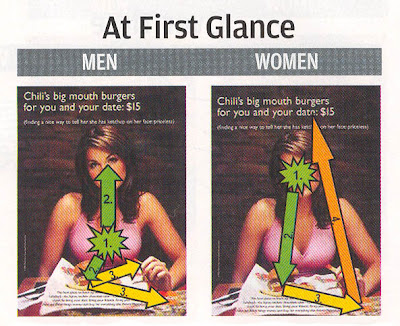Purpose:
To alter my audience’s point of view on various issues involving technology, the media, language and document design, with various sources nodding in my direction
What is a Blog:
Webster’s dictionary defines a blog as a “diary; a personal chronological log of thoughts published on a Web page.” More importantly, it says that blogs are “typically updated daily” and that “blogs often reflect the personality of the author.” (Watson, Boodram, Moaz, & Reynolds, 2005)
Blogging as a Current Phenomenon:
There are many reasons attached to why many individuals spent hours on the computer rambling their thoughts onto cyber space waiting for someone to leave a comment and label their paragraphs as a good piece of writing or a thought provoking read. Like never before, blogging has unleashed a movement encouraging many to pen down their thoughts and activities of the day regardless if they sparked writing flair or not. (Catalano F, 2005) Thanks to the herd mentality in all of us, many have conformed to the world of blogging, allowing anyone and everyone to take a peek in each others’ minds and each others lives. (Catalano F, 2005)
Without the phenomenon of blogging, can you see all bloggers writing journals about their lives? Most certainly not.
So is it safe to say that majoirty of bloggers blog to seek attention?
This harsh statement is somewhat true to a certain extent. But to put it in a different manner, I would say people just want to be heard.
Blogging allows one to unleash their burdens, happiness, sadness, curiousity and many other feeligns but most importanly, blogging allows one to unleash life. Blogging enables us to unleash our lives into words, without borders and restrictions, exposing our inner self to the world and ultimately, to be heard. (Catalano F, 2005)
Classifications of Blogs
By Genre :. political blogs , travel blogs , fashion blogs , football blogs , niche blogs
By Media: vlog , linklog , photoblog , tumblelog
By Device: moblog
Blog Communities
Blog communities is a term to describe a group of bloggers with a common theme. Maybe it be the same interest, the same group of friends or the same neighbourhood, blog communities reveal bloggers that are connected in some way or another. (Kinkeldei B 2007).
Blog communities can be a term to describe the group of people using the same blogging platform, for example, blogspot or xanga. Besides that, blog communities can be defined as communities which links an individual and other independent blogs of a number of people through a shared interest – the same cause, similar political views, business interest and so on (Kinkeldei B 2007). Nuffnang Malaysia, and Bloglah.org are examples of blog communites in Malaysia.
Designing for Online VS Designing for Print
Print and online sites are examples of multimodal texts which incorporate various elements. (Walsh, 2006) With salience, framing and information value, print and online web pages are represetnted at it’s best to attract the audience (Kress and van Leeuwen, 1998) However, designing for online is more vast and open compared to print with various modes such as sounds, animations, hyperlinks and so on to attract it’s audience. (Walsh, 2006). The deisgner is given more to work with and the end result would definitely look more appealing to the audience.
Although text and still pictures are the only modes of print, restricting a desginer’s options to salience, framing and information value to capture his or her audience, (Kress and van Leeuwen, 1998) the reader is captured into the print document paying full attention to all its details.. However, in text layout Diane Reep (2006) states, readers only 'scan' websites and they hardly read every single line and they only seek the information they want on the website.
New Forms of Media Publishing
Once again, technology has stunned us with new forms of media publishing such as vlog, photolog, linklog, moblog and others.
----------------------------------------------------------------
References
Catalano F, 2005, The Journal, Why Blog?, viewed 1st November 2007, <http://www.thejournal.com/articles/17616>
Kinkeldei B 2007, Whitepaper Blog Communities: Forging Connections and Promoting Growth Through Blog Communities, 21 Publish Cooperative Publishing, viewed 30 October 2007, http://www.21publish.com/pub/21publish/blogging-whitepaper.pdf
Kress, G & van Leeuwen, T 1998, ‘Chapter 7: Front pages: (the critical) analysis of newspaper layout’, in Bell, A & Garret, P (eds) 1998, Approaches to media discourse, Blackwell, Oxford, pp. 186-219.
Watson S, Boodram C, Moaz L, and Reynolds S, 2005 Merriam-Webster's Collegiate Dictionary, 11th Edition, Briattanca Publications
Reep, DC 2006, Technical Writing, 6th edn, Pearson/Longman, New York.
Walsh, M 2006, ‘The ‘textual shift’: examining the reading process with print, visual and multimodal texts’, The Australian Journal of Language and Literacy, vol 29, no. 1, pp. 24-37.
 Yes, Sex sells. Infact, sex sells a lot! Look around you. Advertisements everywhere compete for our attention. (Levit, 2001) We can’t help but see an image of a man or a woman who are sexualy appealing to us in one way or another. Sex appeal improves the effectiveness of an advertisement mainly because, we human beings are attracted to sex. It’s just the way we’re created.
Yes, Sex sells. Infact, sex sells a lot! Look around you. Advertisements everywhere compete for our attention. (Levit, 2001) We can’t help but see an image of a man or a woman who are sexualy appealing to us in one way or another. Sex appeal improves the effectiveness of an advertisement mainly because, we human beings are attracted to sex. It’s just the way we’re created.



